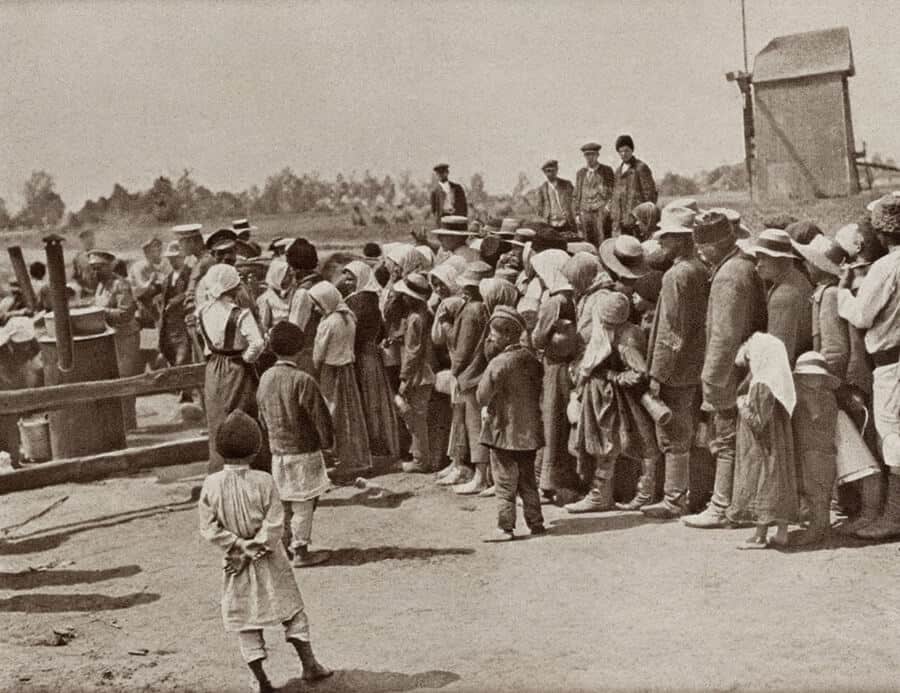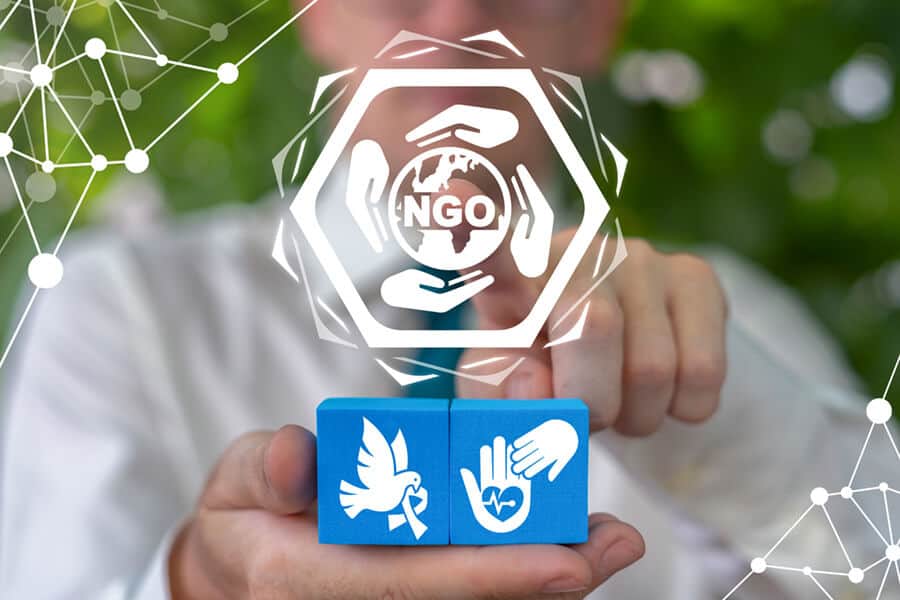NGOs are non-governmental organisations whose history dates back to the 19th century. They evolved alongside the trade union movement, and both of them have fought for human rights in a plethora of fields. Though contemporary NGOs struggle with some distrust due to major government donations, their input in today’s democracy is nonetheless significant.
Non-governmental organisations – NGOs – are usually non-profit, independent organisations, clubs, and associations that provide voluntary help or services to their members or other target groups.
Though most NGOs today are associated with the United Nations (UN), their roots go as far back in time as the mid-19th century. Both the history of NGOs and their present status are a complex subject worth having an idea about, as their importance has significantly grown over the last century.
First NGOs
Non-governmental organisations stem from Great Britain, where two NGOs under the same everyday name were formed – the Anti-Slavery Society, established 1823 and 1839, both pushing for the abolition of slavery in the British Empire. Then, after the Slavery Abolition Act of 1833, they fought for global changes, merging with other associations, hence forming the Anti-Slavery International.
A few decades later, the foundations of an awarded humanitarian NGO, the Red Cross, were laid. The International Committee of the Red Cross was established in 1863 and was a three-time Nobel Prize Laureate. Based in Geneva, Switzerland, it’s part of the International Red Cross and Red Crescent Movement, gathering 192 National Societies.

In the next century, after the First World War, Save the Children was established in the United Kingdom to pursue the “conviction that children have the right to grow up healthy, educated and safe”, which wasn’t a mainstream idea back then. Contemporarily, the organisation works in more than 100 countries, having reached 144 million children in 2019 alone.
After World War II, further two major humanitarian organisations were founded. CARE and Oxfam provide support in long-term developmental projects and help to alleviate extreme poverty globally. They’re both some of the largest and oldest NGOs that continuously struggle to eradicate poverty and provide help in disasters and natural calamities.
In the last 70 years, the importance and number of NGOs has made a major leap forward. Around the world, their missions vary significantly, as do the values they pursue and the issues they wish to tackle.
Post-World War II Development and the Trade Union Movement
Though our civilisation has made major progress in facing global issues and we’ve gradually been fighting global problems, there’s still a long way to go. As society becomes wealthier and better informed, it’s morally appropriate not only to acknowledge the bad situation of people experiencing war, poverty, and lack of education, but also to help them. NGOs are international overseers of governments, making sure they comply with worldwide agreements and respect human rights and, when necessary, they take action themselves.
The trade union movement started to gain momentum simultaneously with NGOs, although the roots of trade unions stem further back to 18th-century Britain as a response to the expansion of industrialism.
They’re said to be successors of medieval guilds. Above all, their mission is fundamentally the same as that of NGOs: to help human beings. Trade unions focus on the standard of workers’ safety, wages, healthcare and more.
Trade unions however have got a significantly different structure – they work as grassroots-level movements, people fighting for their own rights, as compared to “haves” helping “have-nots.”
A trade union has got an elected leadership and a bargaining committee, responsible for bargaining decent working conditions for all members of a union. In countries such as Poland, the Labour Union was also a symbol of an open cry against the then political system, Soviet communism. Indeed, trade unions are pro-democratic entities that stand against worker exploitation and injustice.
Active for more than 50 years, the International Confederation of Free Trade Unions gathered 157 million members in almost 150 countries and territories. It played a major role in the Cold War, standing on the side of social democracy and was a triumph on the side of organised labour. After 2006, it merged into the International Trade Union Confederation, the world largest such organisation today. [5]

At the same time, the United Nations would take more and more control over NGOs, professionalizing such a form of activism. The UN started to narrow down the role of non-governmental organisations to advising governments by the mid-20th century – a then status quo later challenged by NGOs.
By the 1970s, organisations such as Amnesty International would unveil political violence and other humanitarian issues on their own. Today it’s becoming difficult to categorise NGOs, yet they’re an inextricable part of global society and a sign of times. [6]
Big Money
International and independent as they try to be, NGOs are growing tied to governments due to the enormous funds they receive. The world’s biggest NGO, the Gates Foundation, is worth $28.8 billion in donations. In 2001, CARE’s $420 million budget was 70% government-contributed. World Vision International, an Evangelical Christian humanitarian aid, received goods worth $55 million from the US government. A survey conducted in 1998 demonstrated that one-fourth of Oxfam’s income was from the EU’s and the British government’s subsidies.

Dollars bills flow into non-governmental organisations, and when money is involved, some lose their objective out of sight. A study showed that “fees for services [have] increased by 52%, and revenue from the public sector by 40%.
In the meantime philanthropical [sic] income [have] only increased by 8%.” Regretfully, some foundations have become but profit oriented entities and money-making cash machines whose goal is to benefit only already-wealthy lobbyists. [7]
Yet, not all hope is lost. For instance, Amnesty International is fully membership-based; they refuse to accept any funds from governments or politically-entangled bodies. Nowadays, human rights, health, and child care are by far the paramount issues on NGOs’ viewfinders.
According to NGO Advisor, the top three world non-governmental organisations are BRAC – focused on community building and education – then Doctors Without Borders – providing medical help in emergency and crisis – and Danish Refugee Council – helping refugees, children, and youth.
Advance to NGO
Dating back to the 19th century, non-governmental organisations have evolved from revolutionary societies, through government-advising associations, into a wide branch of organisations operating worldwide and tackling global issues such as poverty, famine, or taking action whence human rights are broken.
Developing alongside trade unions, both of these movements have had a major impact on today’s perception of democracy – how and why we value it. Fighting against exploitation, violence, and injustice, trade unions and non-governmental organisations have had a significant impact on today’s society.
The greatest criticism of NGOs is that their motives aren’t necessarily altruistic. Surely, it’s impossible to holistically assess somebody’s motivation, yet there is little doubt that some of the contemporary non-governmental organisations are but huge money-making ATMs running on governments’ donations.
That’s where yet another issue comes to the surface – a plethora of major NGOs are dependent on subsidies coming from politics, which puts their international sovereignty in question.
However, alongside global behemoth organisations, you’re likely to find a myriad of small, local NGOs, full of committed people, striving to help their immediate community. And even among the huge non-governmental organisations there are some based on membership fees only, interdependent from politicians, such as Amnesty International.
NGOs’ input in today’s democracy is unquestionable. Whether you’re considering an internship in one of the humanitarian organisations or are curious to see their current development, we’re all yet to see how non-governmental organisations will evolve in the new, post-pandemic reality.
Photos: Shutterstock
Youth Time, also an NGO, is hosting free webinars in December. Join us now:
Support us!
All your donations will be used to pay the magazine’s journalists and to support the ongoing costs of maintaining the site.
Share this post
Interested in co-operating with us?
We are open to co-operation from writers and businesses alike. You can reach us on our email at [email protected]/[email protected] and we will get back to you as quick as we can.









